Seneb Consulting has contributed to the field of Information Architecture by teaching others, presenting at conferences, writing articles and organizing professional events.
The Information Architecture Conference, Virtual - 2020
Showcase the ethics canvas and how to use it.
Content Strategy Applied, San Jose, CA - 2019
Emphasizing the importance of ethics for content strategists and showcasing an ethics canvas for use in teams and by information professionals.
Code4Lib Conference Presentation, San Jose, CA - 2019
Showcasing an ethics canvas for content and information professionals.
Objective Measures of UX Frameworks
ConveyUX Presentation
Provides a number of ways to evaluate and critique the structure of a user's experience.
IA Summit Presentation; Case study for KickStart, a non-profit organization
Using cognitive framing to formulate winning strategies for communicating with your customers.
IA Summit Presentation
Dow Corning Case Study on Faceted Classification
IA Summit Presentation
Redesign of an Enterprise Class Web Site
Fractional Information Architecture: Expertise on Demand, Impact Guaranteed
1/8/2024
This article unravels the power of information architecture and how it can be accessed by companies of all sizes, regardless of resource constraints.
Advances in Information Architecture
The Academics / Practitioners Roundtable 2014–2019
Book 2021
Reflects the outcomes of the annual Academics & Practitioners IA Roundtable 2014-19. Looks at the discipline’s development and most complete history to date. Examines topics such as AI, diversity in design, ethics and values, embodiment. Includes interviews with industry and academic leaders in the field. Offers methodologies, frameworks and new schools of thought. Attempts to bridge academic and practitioner knowledge. Discusses the move from Classical to Contemporary information architecture.
Articles:
Information Architecture Front and Center: In Conversation with Keith Instone PP. 23-34
The Academics and Practitioners Roundtable 2014–2019, PP. 89-104
Teaching Information Architecture in South Africa: In Conversation with Terence Fenn, PP. 139-149
Institutions Are People and Leadership Is Key: In Conversation with Flávia Lacerda, PP. 187-194
Keepers of Structure: In Conversation with Nathaniel Davis, PP. 211-220
There Is No AI Without IA: In Conversation with Carol Smith, PP. 223-229
————
Content inventories can be daunting tasks if you’ve never done one. Seneb Consulting developed an example content inventory (1) complete with instructions. It can be found on the Information Architecture Institute’s website (2).
The downloadable spreadsheet provides a page of instruction and advice, a page of sample inventory, and a final page showing what an inventory can become when used as part of a content migration project.
This inventory is also featured in Communicating Design: Developing Web Site Documentation for Design and Planning (3), a book by Dan Brown, and Information Architecture for the World Wide Web (4) 3rd & 4th editions.
(1) example content inventory
(2) Information Architecture Tools page
(3) “Communicating Design” book
(4) “Information Architecture for the World Wide Web” book
Using Adoption Metaphors to Increase Customer Acceptance
Boxes and Arrows, 7/5/2006
Communicating through metaphors to increase customer understanding.
MindCanvas Review
Boxes and Arrows, 6/18/2006
MindCanvas is a remote research tool that offers online card sorting and other user research methods to gather valuable data about your customers.
Systems
Course Description
This course explores the design of systems, information and interface for human use. The design of systems is about mapping the flow of interactions and context, exploring the possible inputs and outputs and crafting a design response that is useful, appropriate and robust. Students will learn the importance of information architecture and thorough systemic thinking for effective navigation, searching, and exploration of information. Students will also gain an understanding of the differences and synergies between design and the organization of information, and the ability to evaluate and analyze the success of a system to achieve the intended goals.
Learning Objectives
At the end of the course, students will be able to:
- Identify and map systems used by both humans and machines, including system goals, component parts, inputs, outputs, feedback loops, and context.
- Identify and work with information within systems in order to build excellent user experiences.
- Understand and map complex systems in order to communicate with others, influence key audiences and affect change.
.
California College of the Arts
SAN FRANCISCO CAMPUS
1111 Eighth Street
San Francisco, CA, 94107
“Thank you for a GREAT class. I learned so much.”
“The director saw our game and was very impressed that we had a project in your class that required a real-life deliverable.”
Metaphorical framing and conceptual blending for information professionals. At the end of the workshop, attendees should know how conceptual metaphors can be used for strategy and communication with Information Architecture work. This methodology can also be used to support increased customer adoption of online content and products.
This event brings together a number of academics and practitioners passionate about the field of information architecture. Each year, a topic is chosen and discussed in depth in order to move the field forward to better inform academics of the concerns of those in the field, as well as education practitioners on the latest thinking in academia.
Seneb Consulting has been an integral part of organizing these events since 2014.
Visit the event web site for more information.
The IDEA Conference
IDEA = Information: Design, Experience, Access. A conference on designing complex information spaces of all kinds
Seneb Consulting was a major driver in organizing this event 2006-2008. This was a single track, curated event to inspire information architects, UI and UX designers, and has since become World IA Day.
Seattle, WA
IDEA 2006 brought together a diverse set of designers, creators, and researchers addressing fundamental challenges - how to let everyday people take true advantage of the overwhelming influx of masses of information.
Many different kinds of folks work in this space but typically don't talk with one another. For this event, we made an effort to invite presenters across a stunning array of disciplines - museum design, information visualization, librarians, environmental design, user research, engineering, interaction design, product strategy, and more. See more.
New York City, NY
This conference addressed issues of design for an always-on, always-connected world. Where the online and offline worlds merge together. Where physical spaces are so complex that detailed wayfinding is necessary to navigate them. Where work processes have become so involved, and so digitized, that we need new processes to manage those processes.
This conference brought together people who addressed these challenges head on. Speakers from a variety of backgrounds discussed designing complex information spaces in the physical and virtual worlds. See more.













